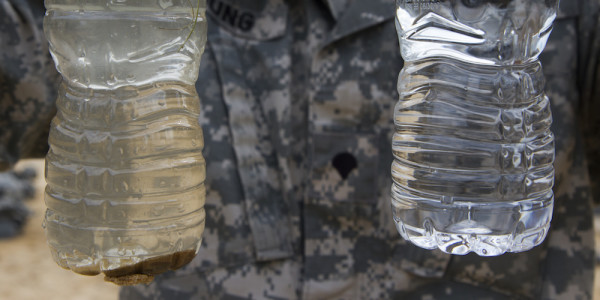This Is The Military Base Water Contamination Study The White House Didn’t Want You To See
Toxic breast milk. Contaminated umbilical cords. Testicular cancer. Organ failure. These are just some of the side effects of the...

Toxic breast milk. Contaminated umbilical cords. Testicular cancer. Organ failure.
These are just some of the side effects of the chemical compounds that have poisoned drinking and groundwater sources at dozens of military bases across the country, according to a major government study that the White House and Environmental Protection Agency sought to keep from the American public.
- After a March DoD report to the House Armed Service Committee revealed that at least 126 U.S. military installations tested at “higher than acceptable” concentrations of the per- and polyfluoroalkyl substances (PFAS) found in military firefighting foam in water supplies, the Department of Health and Human Services (HHS) conducted its first-ever in-depth analysis on the health impacts of the chemicals.
- According to the HHS study, the health effects of exposure to PFAS chemicals in humans include pregnancy complications, liver damage, high cholesterol, decreased response to vaccines, and an increased risk of thyroid disease, asthma diagnosis, and long-term fertility issues. Even more alarming, PFAS chemicals can contaminate human breast milk and umbilical cord blood, massively increasing the potential of birth defects among affected fetuses.
- The effects on laboratory animals are just as alarming. An analysis of 187 studies of PFAS exposure in laboratory animals revealed “liver toxicity, developmental toxicity, and immune toxicity” — as well as total organ failure. But even worse, comparisons between human and animal exposures reveal it takes human beings four years to expel toxins that rodents purge in just a few hours.
If you want a visceral portrait of the horrifying impact of PFAS contamination, I highly recommend this jaw-dropping reporting from Military Times' Tara Copp, who spent the last several weeks speaking to veterans and their families who have had their lives destroyed by chronic issues that are likely connected to years of exposure to the chemicals. In one case, Copp spoke to a female airman who was told “don’t get pregnant at George Air Force Base” when she PCSed there in the mid-1970s.
“You rely on the service to keep you safe,” she told Copp. “And although there’s no guarantee of safety, when you’re stateside you certainly don’t expect toxic exposure.”
Read the whole HHS report below and Copp's full report over at Military Times.
Toxicological Profile for Perfluoroalkyls
WATCH NEXT:
